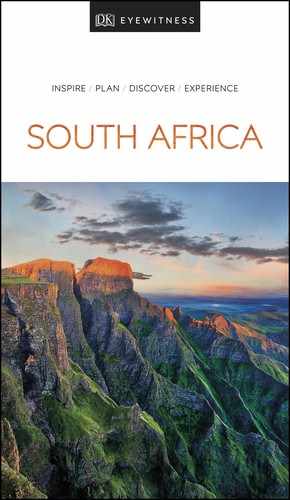An immense wilderness of grass-covered dunes traversed by two dry, ancient riverbeds, this national park is Africa’s largest and extends for 34,390 sq km (13,278 sq miles), absorbing much of the distinctive red Kalahari desert. Jointly managed by South Africa and Botswana, the border within the park is unfenced and the wildlife is free to migrate.
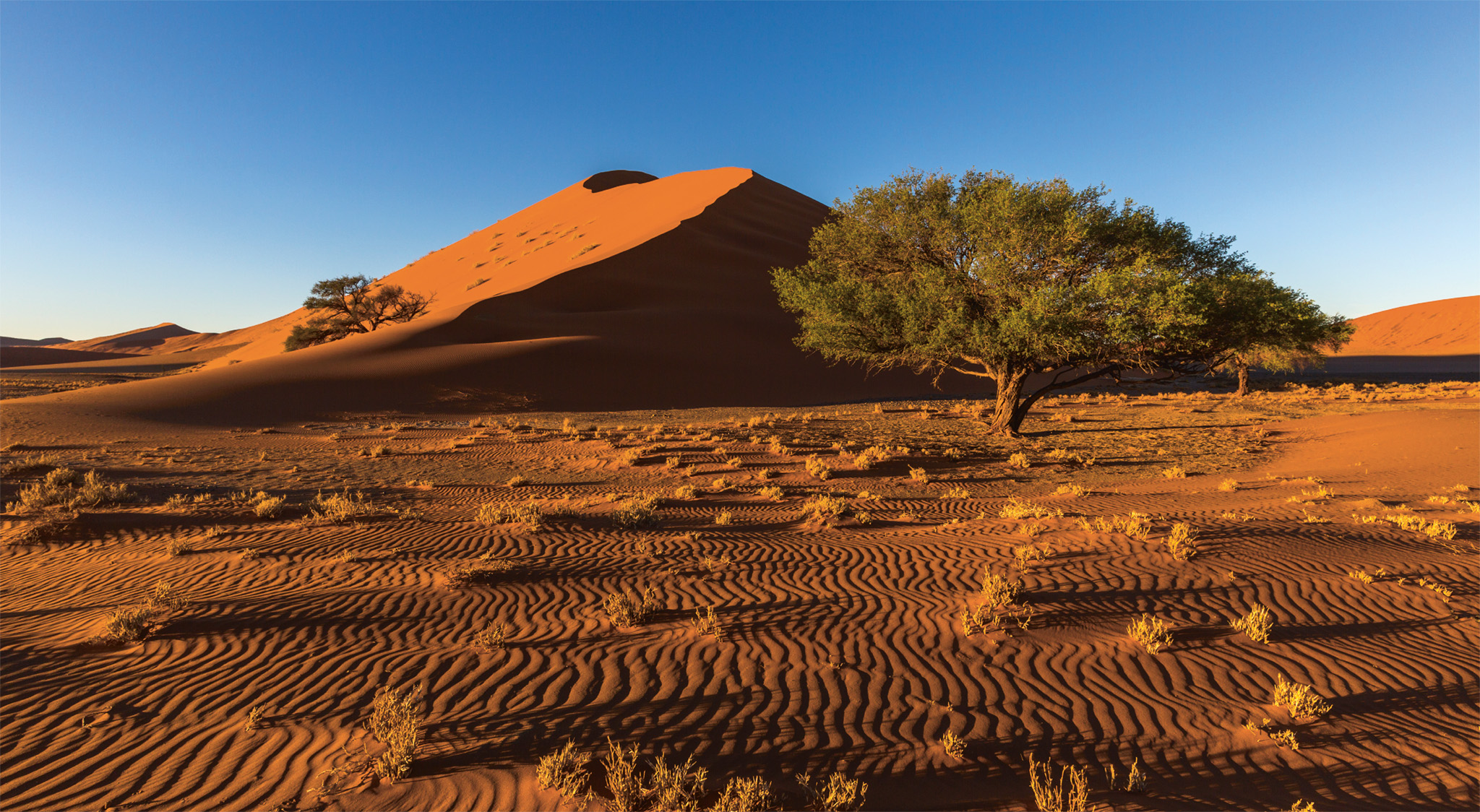
t Wave-like patterns in the park’s unusual red sand, seen in the morning light
EXPERIENCE The Arid Northwest

t Lions in Kgalagadi have very large ranges, due to the low density of prey.
From Upington the tarred R360 cuts a course across a landscape that seems devoid of human habitation until it reaches the southern entrance, largest rest camp and the park administrative headquarters at Twee Rivieren. Here there are chalets, a campsite, swimming pool and the park’s only restaurant. Additionally, it has immigration facilities for those crossing between South Africa and Botswana or Namibia via the park. From Twee Rivieren, two gravel roads follow the dry courses of the Auob and Nossob rivers on their way to the other two main rest camps of Mata Mata and Nossob. There are also six wilderness camps in the dunes, accessible by 4WD only.
Although the Kgalagadi is located in a particularly arid region, wildlife is surprisingly plentiful, with an astonishing 19 species of carnivore present, including the black-maned Kalahari lion and honey badger. Several species of raptor – including tawny and bateleur eagles, plus the pale chanting goshawk – are also often sighted. A string of waterholes, pumped by solar or windmill power, sustain wildlife.
EXPERIENCE The Arid Northwest
Sir Laurens van der Post (1906–96)

Soldier, philosopher, writer and explorer, Laurens van der Post was the son of an Afrikaner mother and a Dutch father. In 1946, following World War II, he began his journeys into the South African wilderness. His fascinating account of the expedition in search of the San people of the Kalahari, The Lost World of the Kalahari, was published in 1958. It was one of the first books to detail this intriguing and highly spiritual culture.
EXPERIENCE The Arid Northwest
Life in the Desert
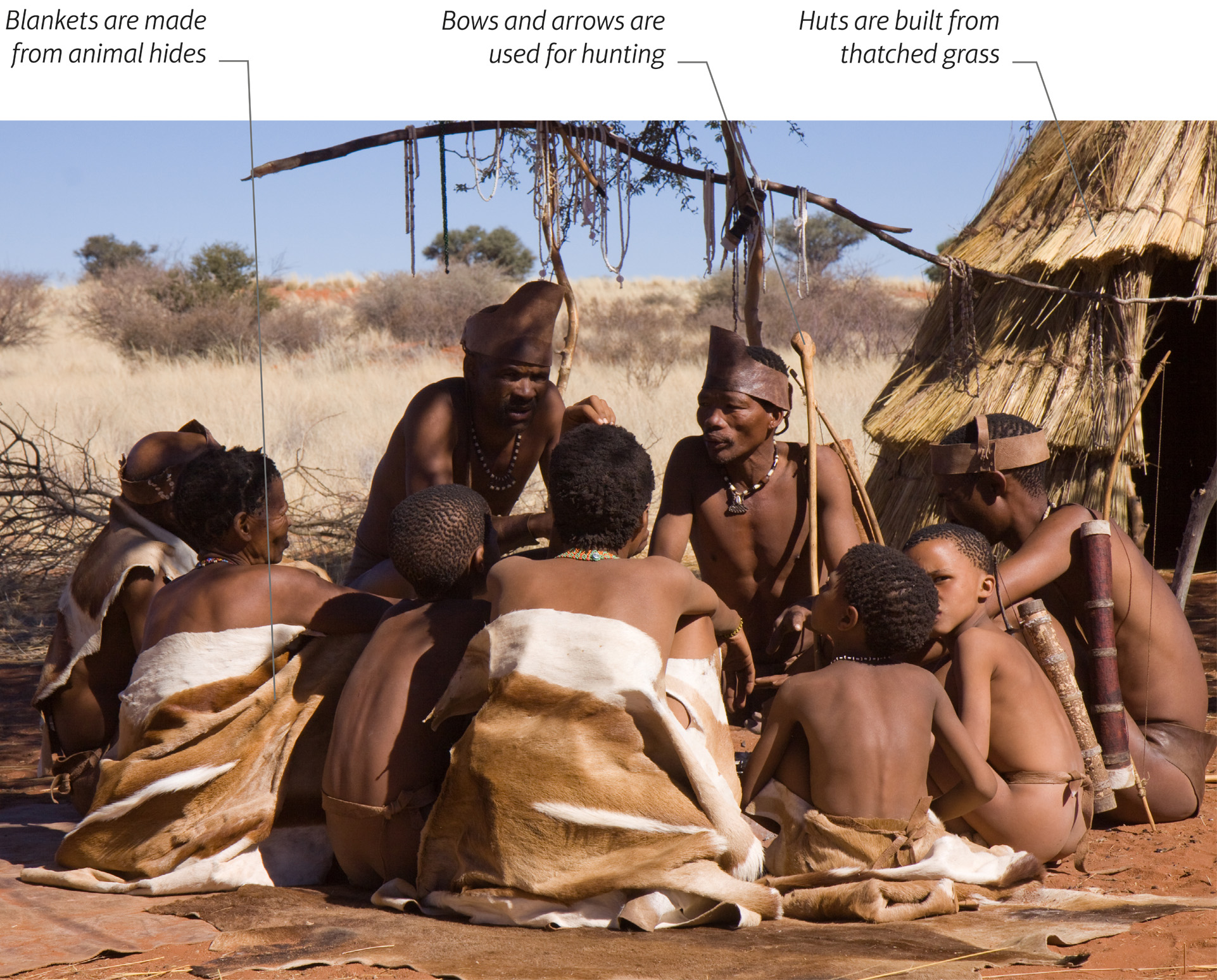
t A San family gather at their settlement in the desert
The Kalahari Desert forms part of a vast inland steppe that stretches from the Orange River to the equator. It extends across portions of the Northern Cape and Namibia, and also covers much of Botswana. Rainfall in this region varies from 150 mm to 400 mm (6–16 inches) per year and is soon soaked up or simply evaporates. There is little surface water and the flora consists mainly of grass, shrubs and the hardy camelthorn acacias that line the dry beds of ancient rivers. Although the harsh landscape may appear to be lifeless, it supports an astonishing variety of wildlife.
The San

t Seasonal river beds, such as that of the Auob, carry water only every few years
These nomads, once known as Bushmen (a term that is now considered derogatory), have inhabited southern Africa for over 20,000 years. However, due to the impact of colonialism, thepopulation has been severely diminished. A small community remains in the Northern Cape, living on land south of the Kgalagadi Transfrontier Park allocated to them in 1997. The modern age has severely affected their culture, limiting the San’s hunting area and diminishing their food resources. Even in the remote reaches of Botswana, clans now live in settlements around waterholes – the nomadic lifestyle replaced by a sedentary existence. Before these camps were established, water and food were obtained from the bush: the San knew of 20 edible insects and 180 plants, roots and tubers, including fruits such as the bitter-tasting Tsamma melon.
EXPERIENCE The Arid Northwest
Desert animals
The wildlife of the Kalahari is superbly adapted to survive in this arid environment.
Steppe Buzzard

t Steppe buzzard
Steppe buzzards are migrant visitors to the Kalahari, arriving in southern Africa during October and departing in March.
Gemsbok
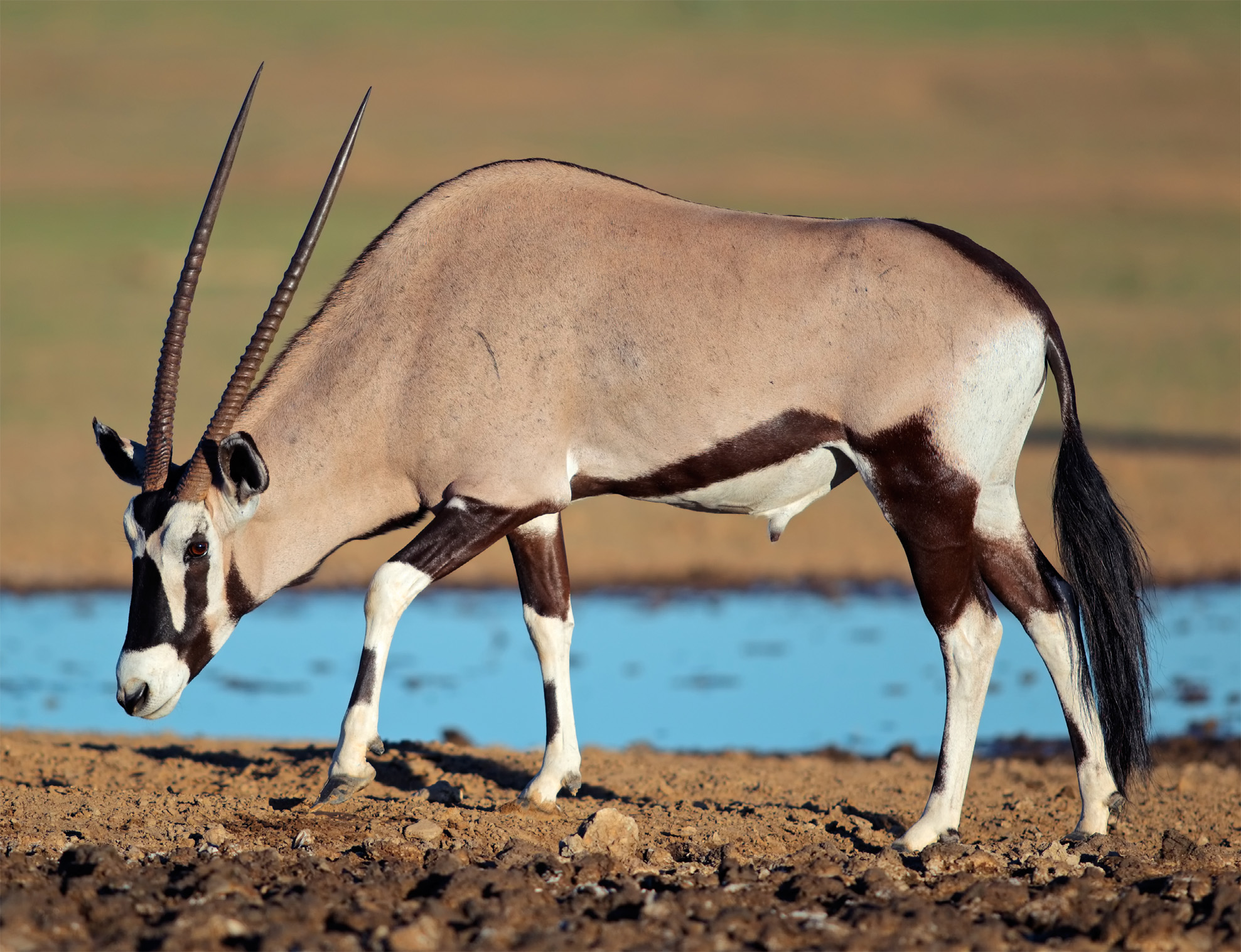
t Gemsbok
Gemsbok (oryx) feed on grass, leaves and roots, and can do without water for many days. The animal’s temperature fluctuates in response to climatic changes.
Kalahari Lion
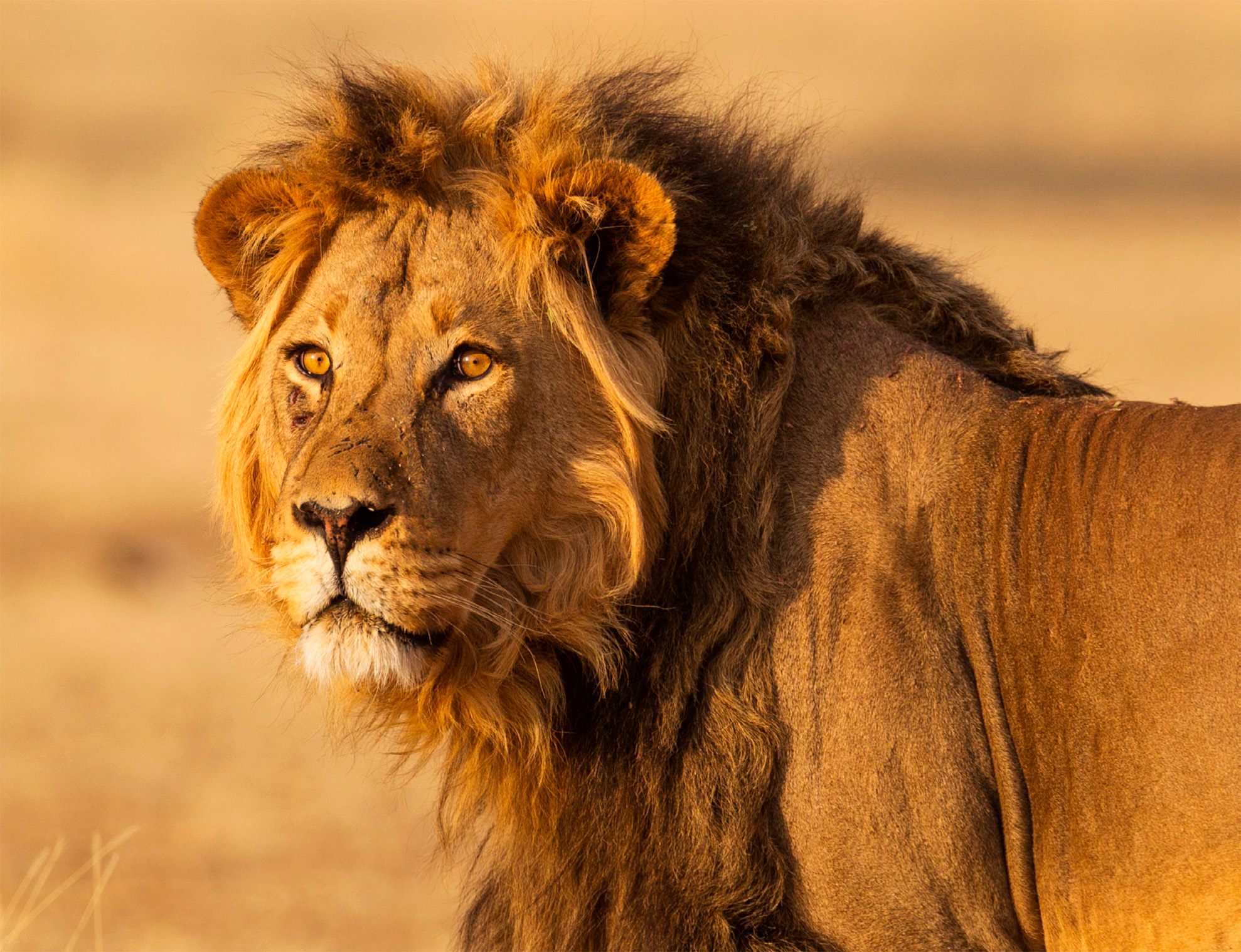
t Kalahari lion
Kalahari lions are unique to the Kgalagadi Transfrontier Park, and have learned to depend on smaller prey, such as bat-eared foxes, when antelopes migrate.
Bat-Eared Fox

t Bat-eared fox
Bat-eared foxes’ large ears allow them to detect underground prey, such as beetle larvae, in the barren areas.
Brown Hyena
Restricted to the drier desert regions of southern Africa, the brown hyena can survive without fresh water for extended periods of time.
Barking Gecko
Barking geckos herald sunset in the desert by emitting a series of sharp clicking sounds.
Scarab Beetle
The Sparrmannia flava scarab beetle has a furry coat that enables it to remain active at night when temperatures drop.
Puff Adder
The highly venomous puff adder leaves deep, straight tracks that can sometimes be seen on the Kalahari sand dunes.
Namaqua Sandgrouse

t Namaqua sandgrouse
Namaqua sandgrouse males fly distances of up to 60 km (37 miles) every three to five days to drink and soak their specially adapted chest feathers. The water retained in these feathers sustains the chicks.
Did You Know?
The Kalahari is the second-largest desert in Africa, after the Sahara.
